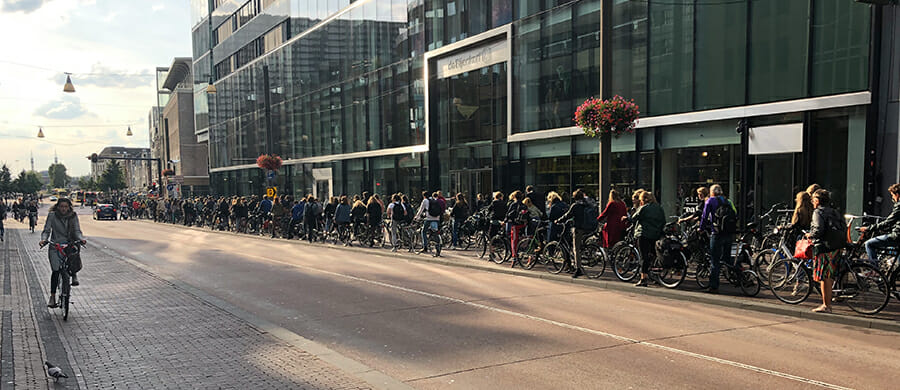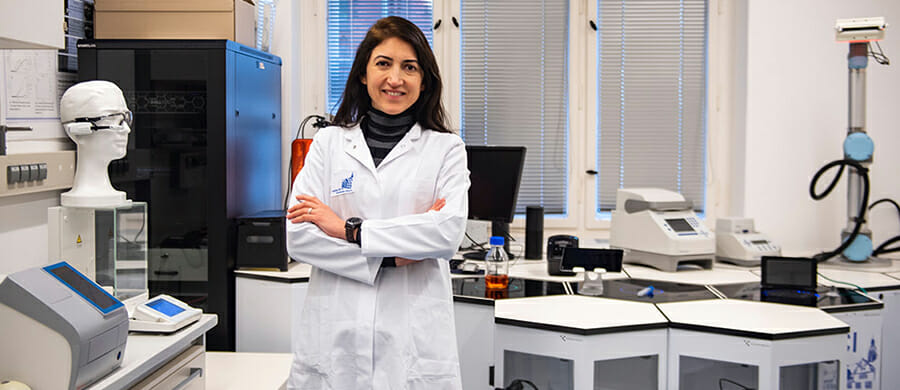TECHNICAL UNIVERSITY OF BRAUNSCHWEIG
Leichtweiß-Institute for Hydraulic Engineering and Water Resources
DATA & FACTS
Project
2024-2029
Scientific contact
Prof. Dr. Nils Goseberg
EU-Funding line
ERC Consolidator Grant
Projektleitung: Prof. Dr.-Ing. Arno Kwade
Projektname: „Li-Ion Pilot Lines Network“ (LiPLANET)
Keywords: Energie, Mobilität, Partner
Nils Goseberg receives ERC Consolidator Grant for research on coastal protection during extreme events
Floods like the one in the river Ahr valley, Germany, and storm surges during extreme weather events are increasing due to climate change. Tsunamis are amongst the deadliest flood phenomena facing our coastal villages and cities. The risk of residential houses being destroyed under the pressure of the water is ever-present. Professor Nils Goseberg from Technische Universität Braunschweig wants to investigate the complex processes of building collapse during extreme flow events. The aim of his ’AngryWaters’ project is to develop a simulation tool to better predict how far inland water will penetrate past existing and collapsing buildings. The scientist has now been awarded the prestigious Consolidator Grant from the European Research Council (ERC), which will fund his project with around two million Euros over five years.
In the research project of the same name, the researcher focuses on so-called “angry waters”. By “angry waters”, Nils Goseberg means extreme flow events. These can be tsunamis that flood and destroy coastal cities – as happened in 2011 after the earthquake off the coast of Japan. They can also include dam failures in reservoirs that are no longer safe due to their long lifespan – as happened last year in Derna, Libya, when two dams burst and a seven-metre-high flood wave hit the city. All of these extreme events pose a significant risk to buildings and the people who live in them. But how can residents living on coasts and rivers be better protected? In order to improve predictions of inundating waters, it is also necessary to deepen our understanding of the collapse process of buildings. The problem is that the collapse of buildings cannot yet be well captured by simulations or experiments because the key requirements for the processes in the laboratory at a reduced scale are not known. Previous research has mainly focused on the interaction between flow and structures, assuming that the structures remain intact, often even that they are solid bodies.
The ‘AngryWaters’ project aims to model the dynamic collapse process and to capture the interactions between water and collapsing buildings. Professor Goseberg will use the wave flumes in Braunschweig and at the Coastal Research Centre in Hannover to simulate the collapse of buildings at different scales. In the Large Wave Current Flume (GWK+), scientists will be able to work on an almost 1:1 scale. Until the end of 2024, the GWK+ will be supplemented by a new dam break gate, funded by the German Research Foundation (DFG). “We can mount the gate in niches in the walls and thus also use this unique research facility for dam-break flows. This is an example of the potential we have in Braunschweig and Hannover,” says Nils Goseberg.
The dam break gate, behind which the researchers can store the water to a height of up to three metres, opens with a swinging mechanism like a garage door and releases the water in a dam break surge. “The dimensions are comparable to those found in nature,” says Goseberg. “Eight metres of flow per second, almost one and a half metres of flow depth on the land side.” Initially, the scientists will simulate the process with individual parts of the building, and later with an entire house.
The researchers will carry out the experiments with a smaller dam break flap in the 90-metre-long wave flume in the laboratory of the Leichtweiß-Institute of Hydraulic Engineering and Water Resources in Braunschweig. “This means that we can investigate the larger length scales in Hannover and the smaller ones in Braunschweig – we’re talking about scales of 1:10 and 1:15.” From these different scales, new principles can be derived that can be used to reduce the scale of the buildings for the simulation.
Based on this research, Professor Goseberg and his team aim to develop a prediction tool that can be validated using those novel experimental data. “In the case of extreme events such as a tsunami, the collapsing buildings and the resulting debris must also be taken into account in order to make more accurate predictions about how far the water will spread, when and how it will rise, and what evacuation measures will be necessary,” says Professor Goseberg. This is crucial for the development of safe coastal and river areas and will significantly improve preparedness.
The ‘AngryWaters’ project is therefore also a fundamental building block in the research mission launched by the German Marine Research Alliance in January: “mareXtreme” investigates how risk management can be improved in the event of extreme marine events and natural hazards. “These projects are important for Lower Saxony, for northern Germany, but also worldwide. The topic of extreme coastal hazards will become much more relevant due to the dynamics of climate change, and our strong involvement in mareXtreme and the ERC project means that we are very much present in Lower Saxony and have our finger on the pulse of what needs to be done”.
About Professor Dr. Nils Goseberg
Since the beginning of 2018, Professor Nils Goseberg has represented the Department of Hydromechanics, Coastal and Ocean Engineering at the Leichtweiß-Institute for Hydraulic Engineering and Water Resources (LWI) at TU Braunschweig in research and teaching. He is also managing director of the LWI and deputy managing director of the Coastal Research Centre, which is run jointly with the Leibniz Universität Hannover. Goseberg completed his Ph.D. at Leibniz Universität Hannover and successfully completed his habilitation thesis there at the end of 2017. As a Marie Curie fellow of the European Union between 2014 and 2017, he conducted research at the University of Ottawa in Canada on “Spatio-temporal distribution and structural impact loading due to artificial debris objects in violent flows”. He is the author of more than 80 peer-reviewed publications on coastal and ocean engineering.
Date:
2024
Das könnte Sie auch interessieren …

Projekt: BITS – BICyCLES and its
Bicycles and ITS (BITS) ist ein neues Projekt zum Thema Fahrrad und ITS (intelligente Transportsysteme), das darauf abzielt, die CO2-Emissionen um 9 % zu senken und die Fahrradnutzung in den Zielgruppen um 10 % zu steigern! Eine Verlagerung des Verkehrs auf umweltfreundliche Verkehrsmittel ist dringend erforderlich, da Verkehrsstaus, …

ProjeKt: decades
Die chemische Industrie steht derzeit vor der herausfordernden Transformation, klassische, auf Erdöl basierende Herstellungsprozesse von Chemikalien durch nachhaltige, biobasierte Produkte im Sinne einer zirkulären Bioökonomie zu ersetzen. Insbesondere Lösungsmittel spielen in der chemischen Industrie entlang der gesamten Produktionskette eine…
